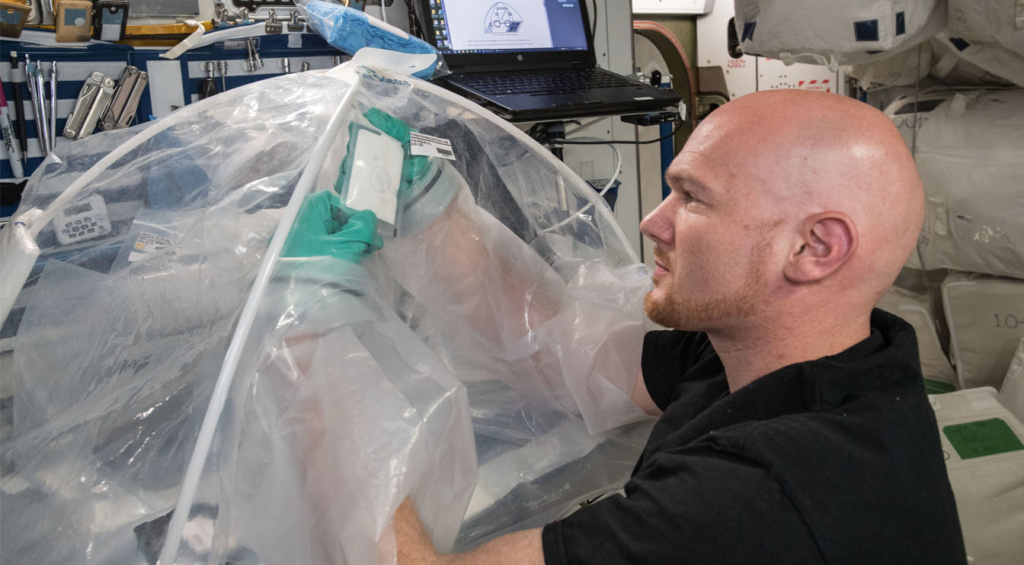Can you build with concrete in space? That is the question NASA and Pennsylvania State University researchers have been trying to get the answer to in their Microgravity Investigation of Cement Solidification (MICS) study. If humanity has any future on the moon or Mars, we’ll need shelter—not from rain or snow, but cosmic radiation and space debris.
While the ubiquitous building material is easy enough to make on Earth, it was until now unclear how its mixing might fare in microgravity on other astral bodies. In a paper published in Frontiers in Materials, “Microgravity Effect on Microstructural Development of Tricalcium Silicate (C3S) Paste,” scientists reported on the different microstructures that appeared in concrete (composed of tricalcium silicate and water) made here on Earth and on the International Space Station. They discovered a greater porosity in the extraterrestrial concrete, which may affect the material’s strength, though the scientists have yet to test the experimental result itself.
The project’s principal investigator, Aleksandra Radlinska, said that “even though concrete has been used for so long on Earth, we still don’t necessarily understand all the aspects of the hydration process. Now we know there are some differences between Earth- and space-based systems and we can examine those differences to see which ones are beneficial and which ones are detrimental to using this material in space.”
Humanity has long imagined about what it would be like to live off-world. The NASA and Penn State research comes as numerous explorations of manufacturing and building in space are being taken more seriously—from Elon Musk’s (“impossible”) terraforming aspirations and Jeff Bezos’s own plans for a space colonization, to speculative projects investigating 3D printing on Mars that have won awards from NASA, and promising additive manufacturing experiments happening in the microgravity environment aboard the International Space Station.
However, there is plenty to be done here on Earth, despite the astronomical whims of many billionaires. The team behind the concrete study hopes that by comparing the compositions of the concrete made in space and on Earth that more can be learned about how the materials we build with act on our own planet, as well.
